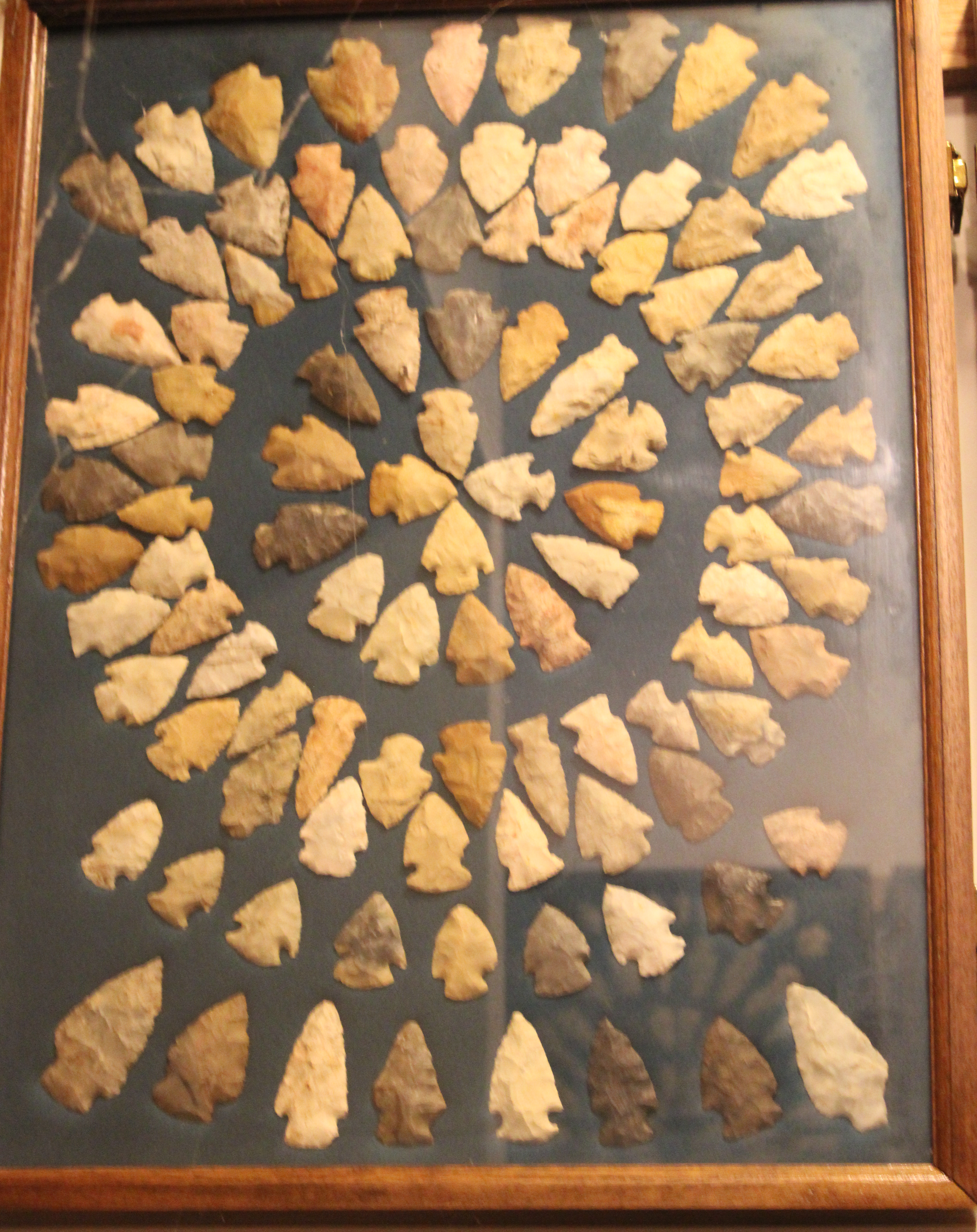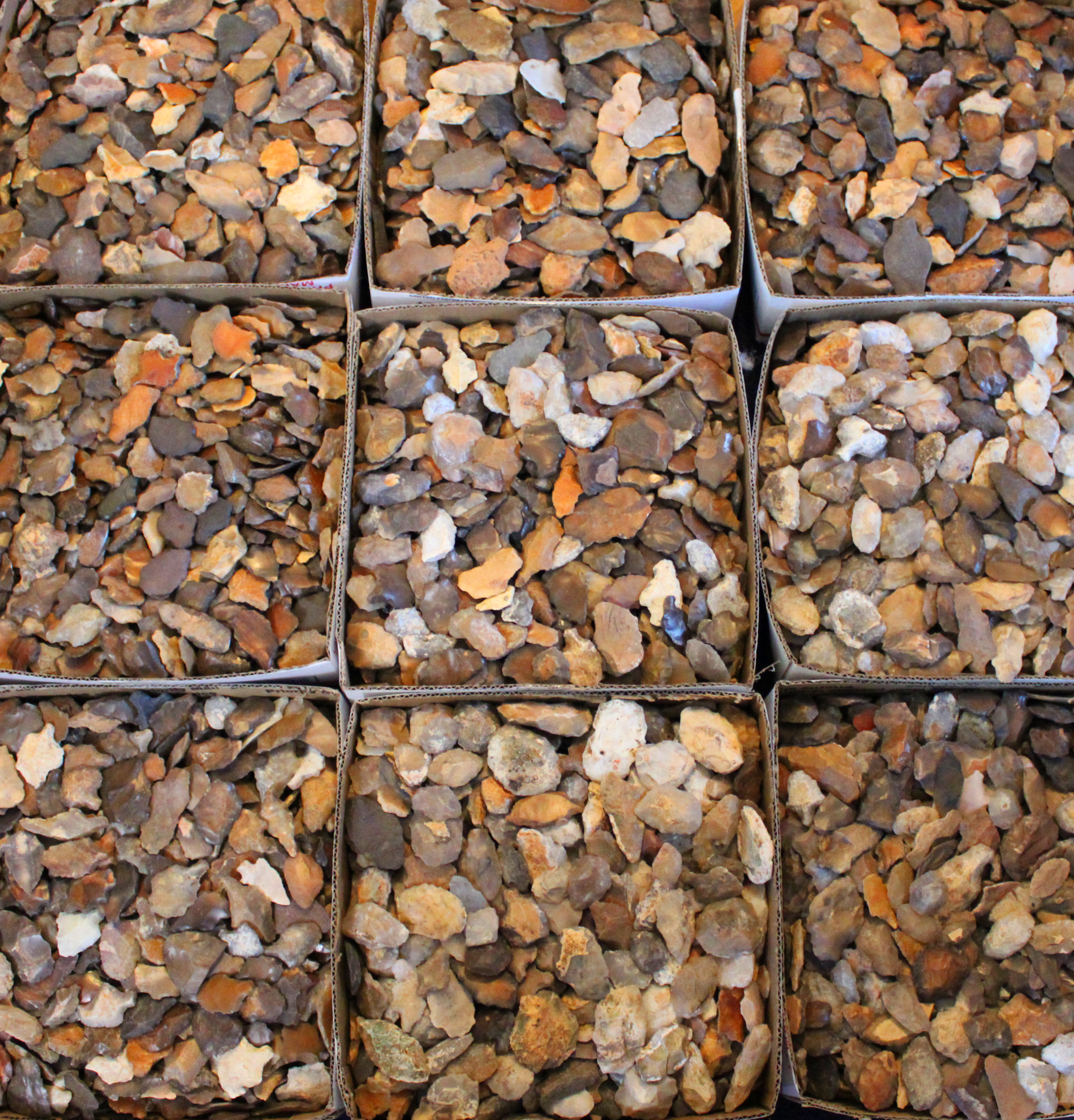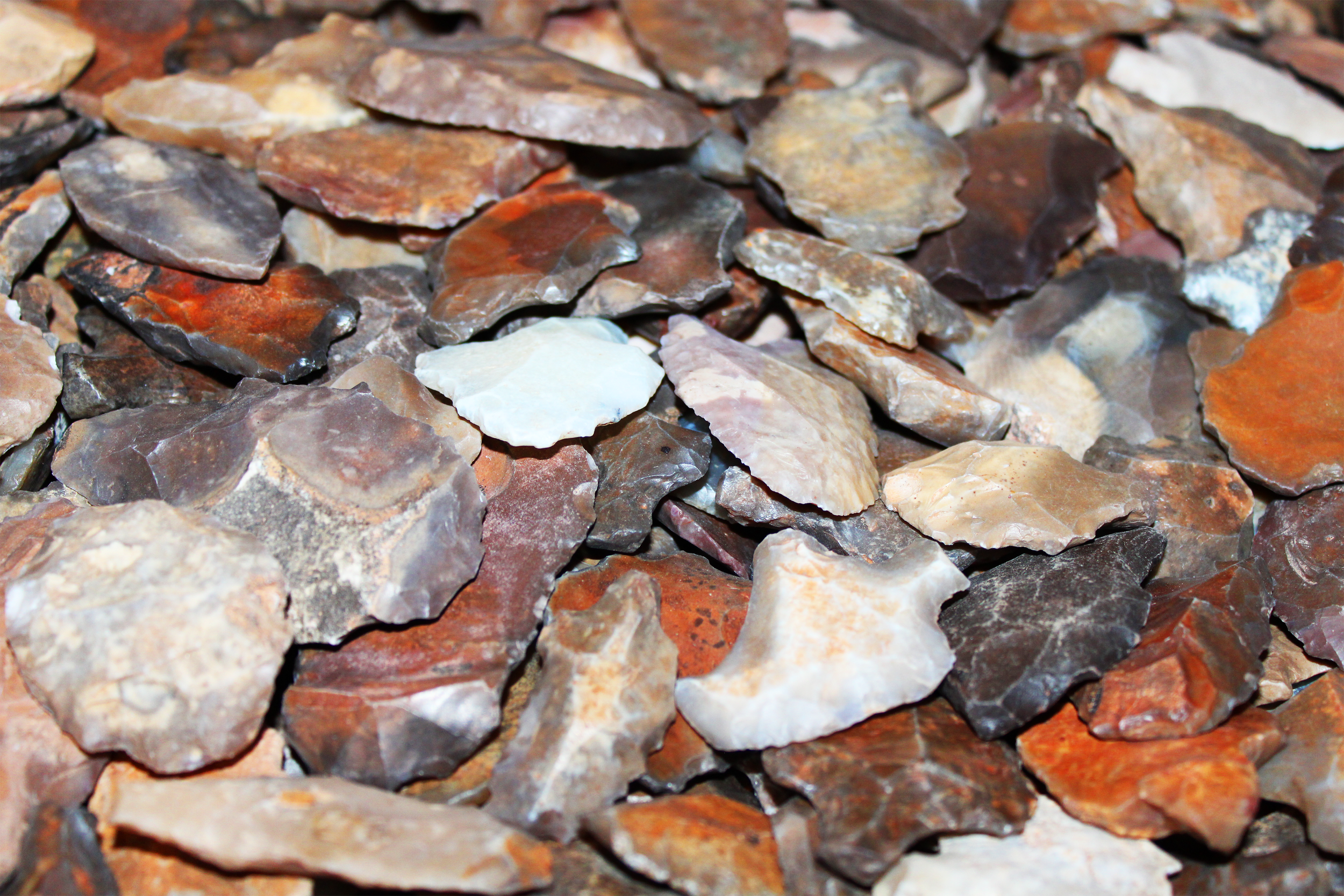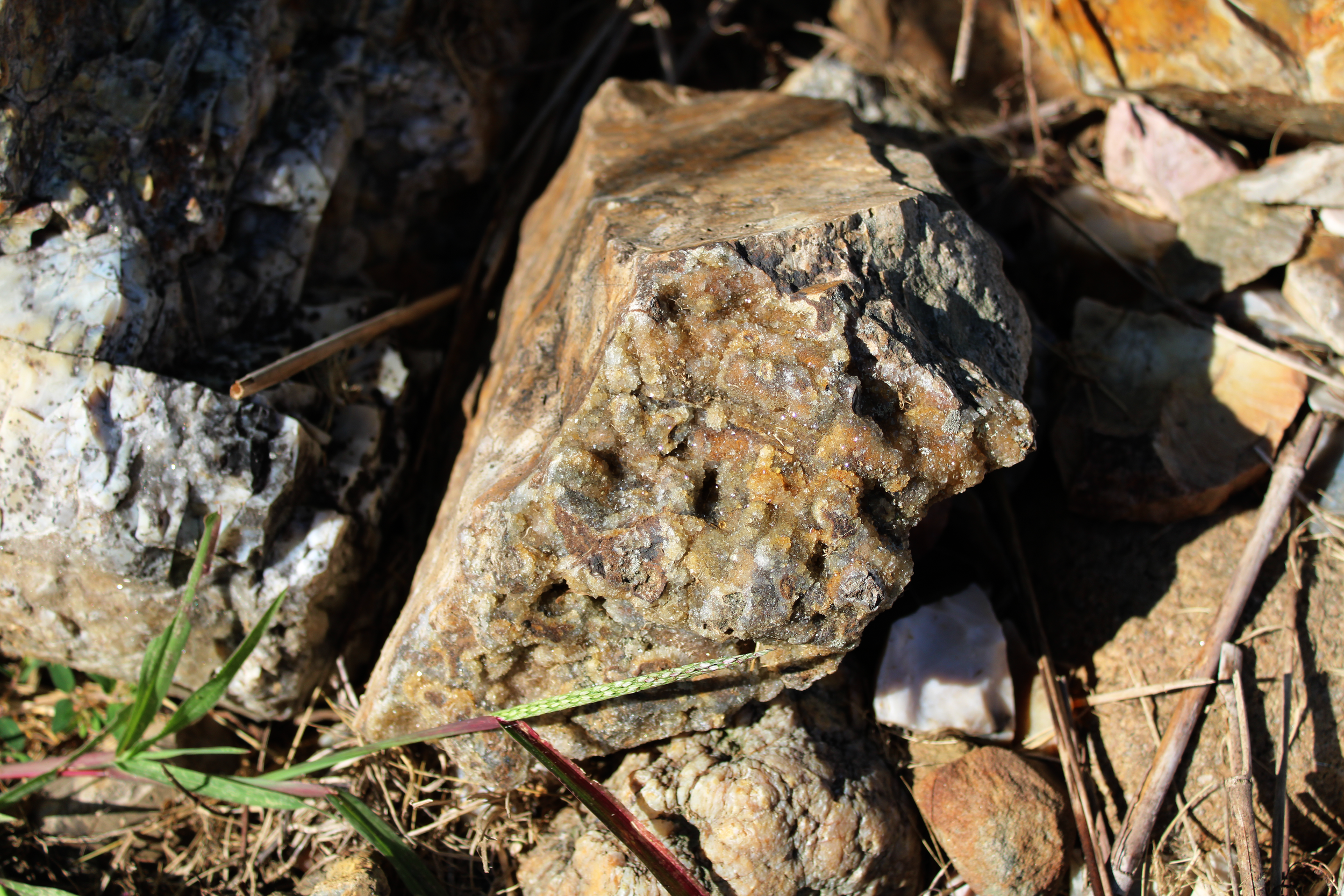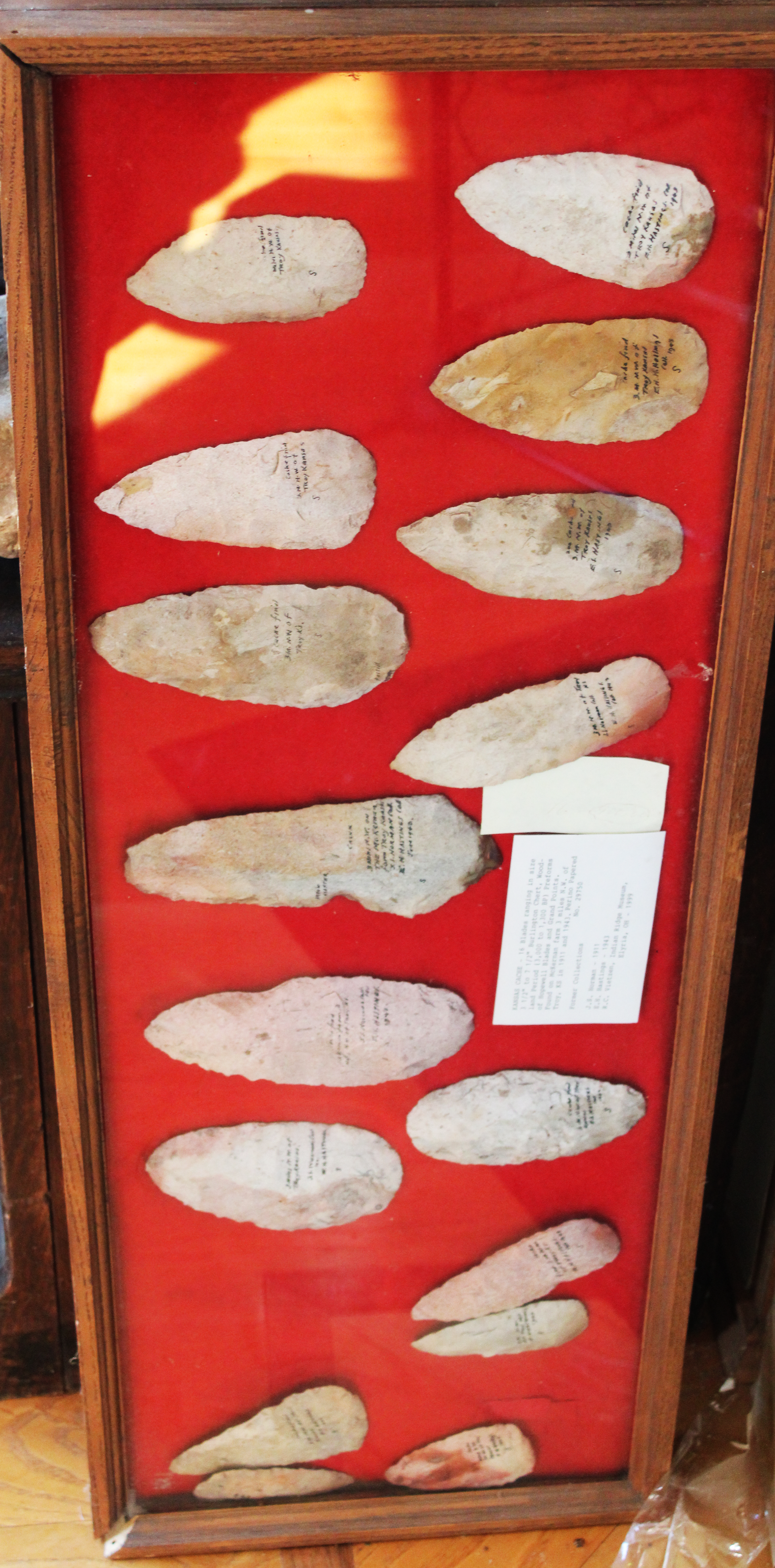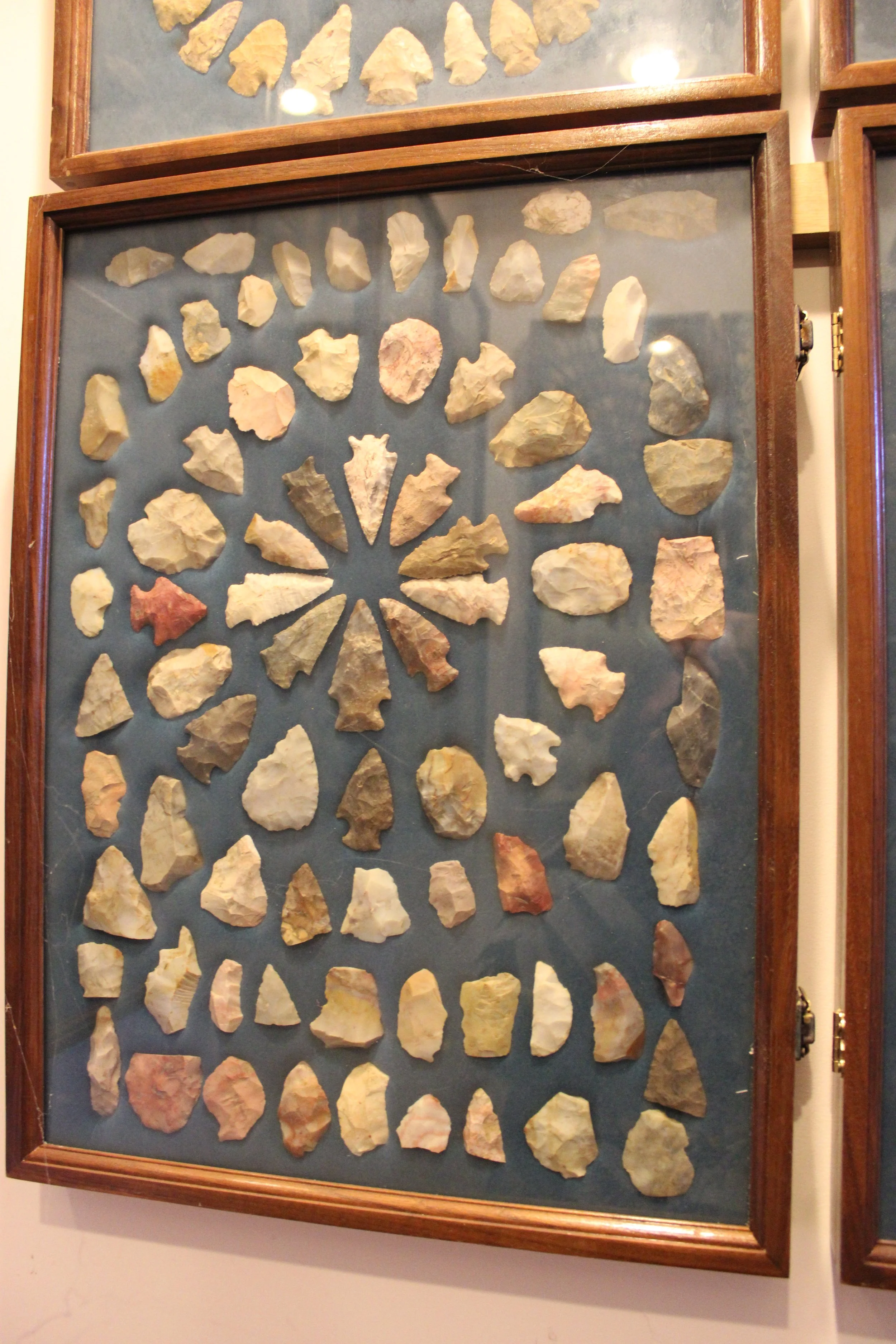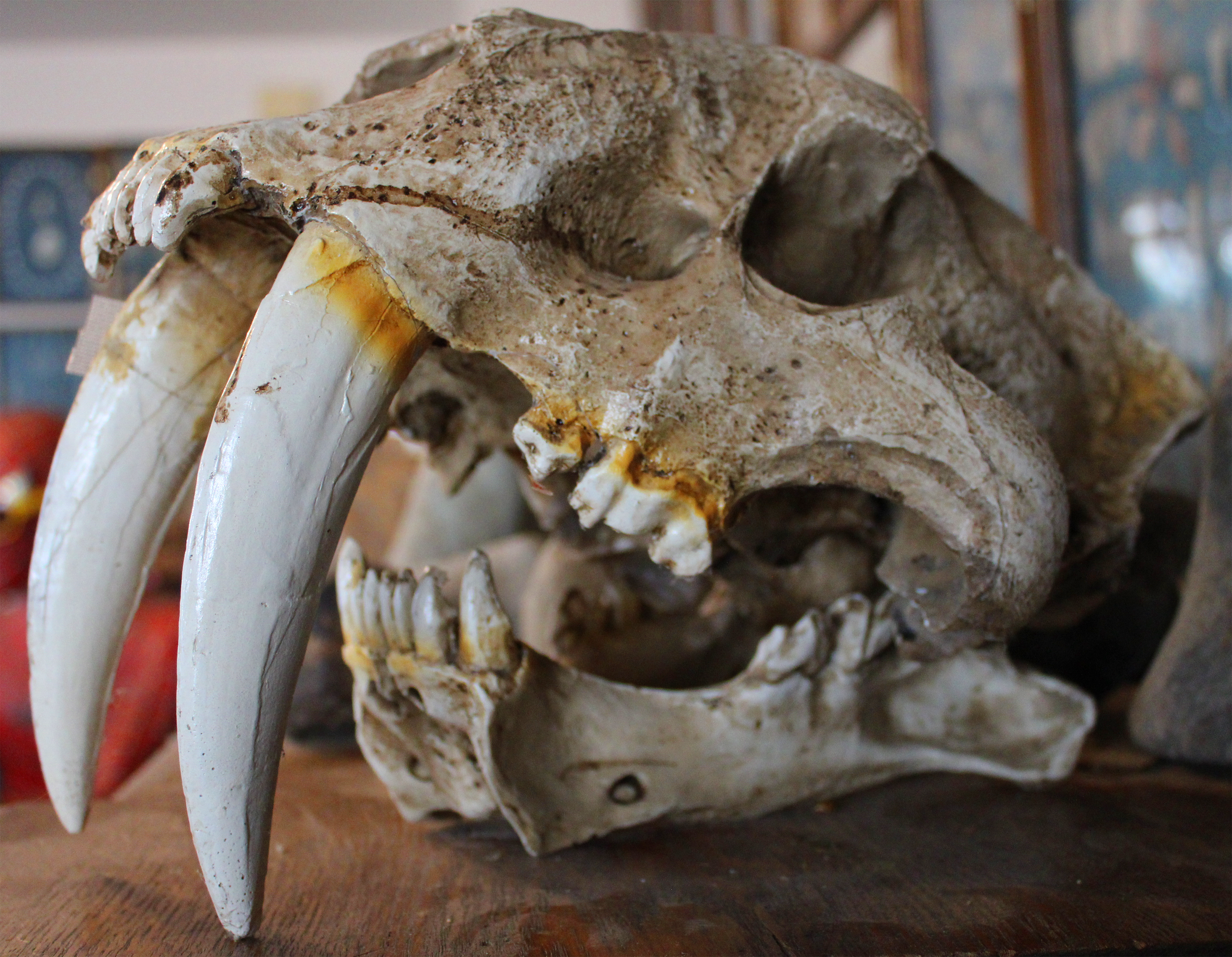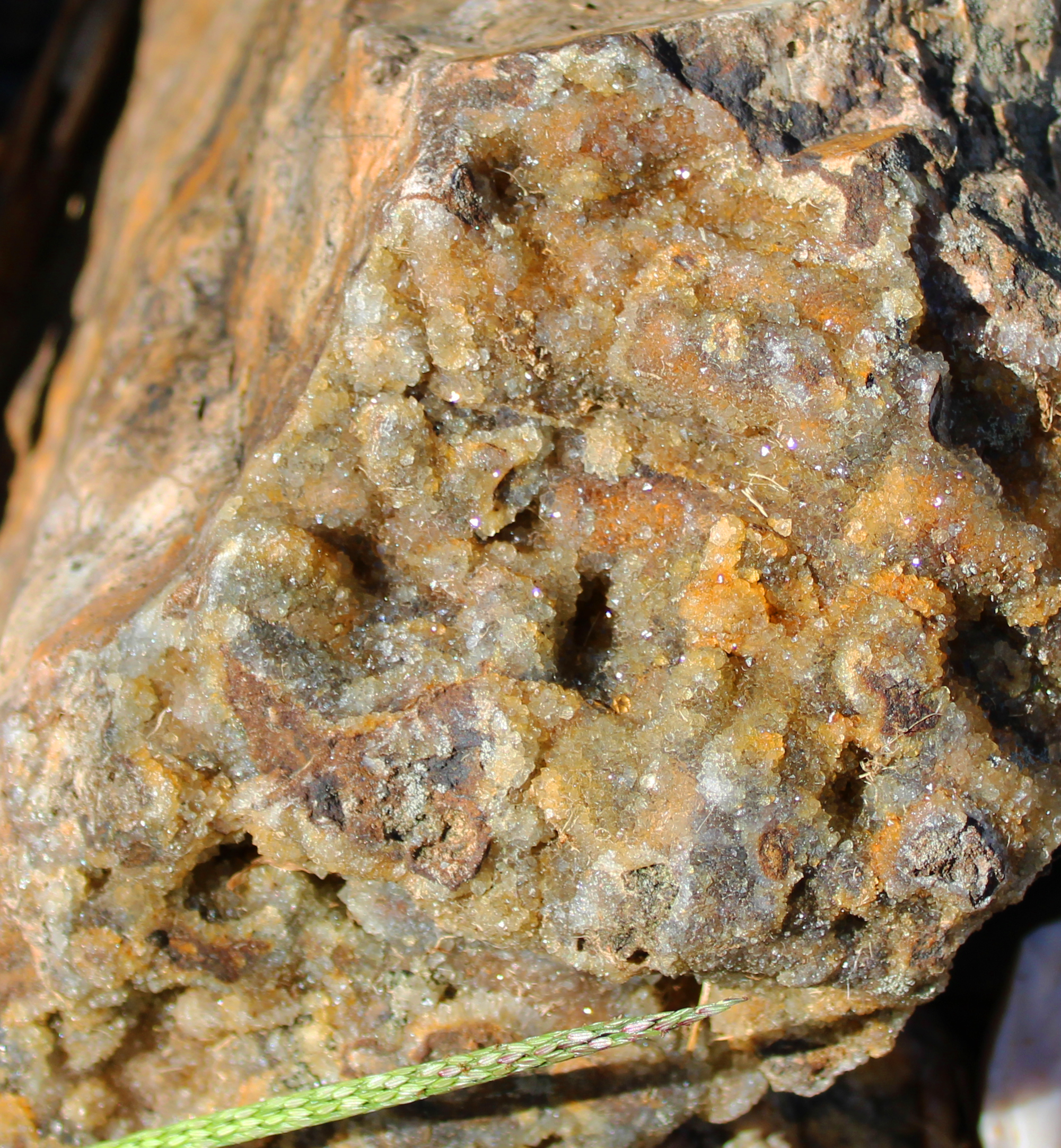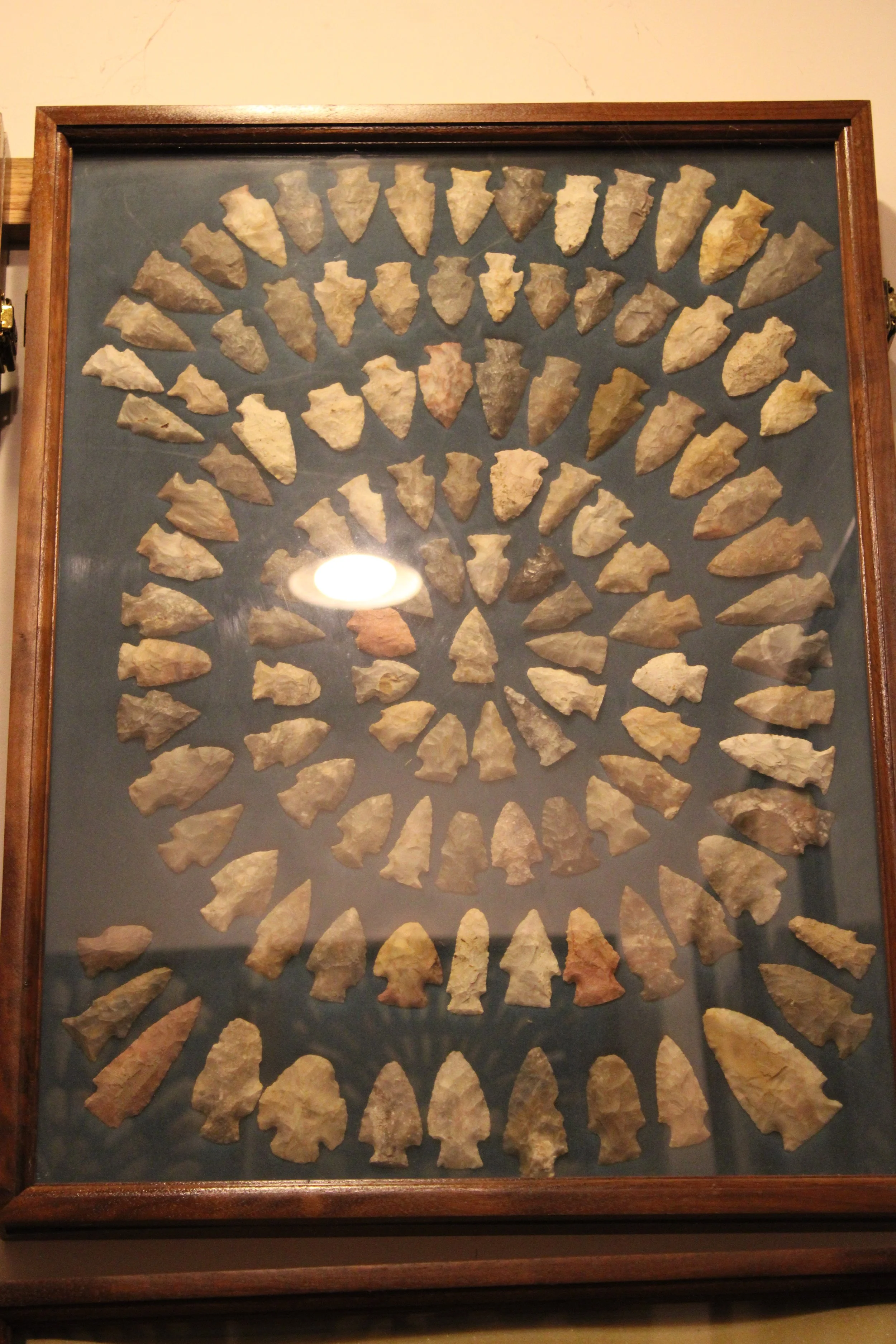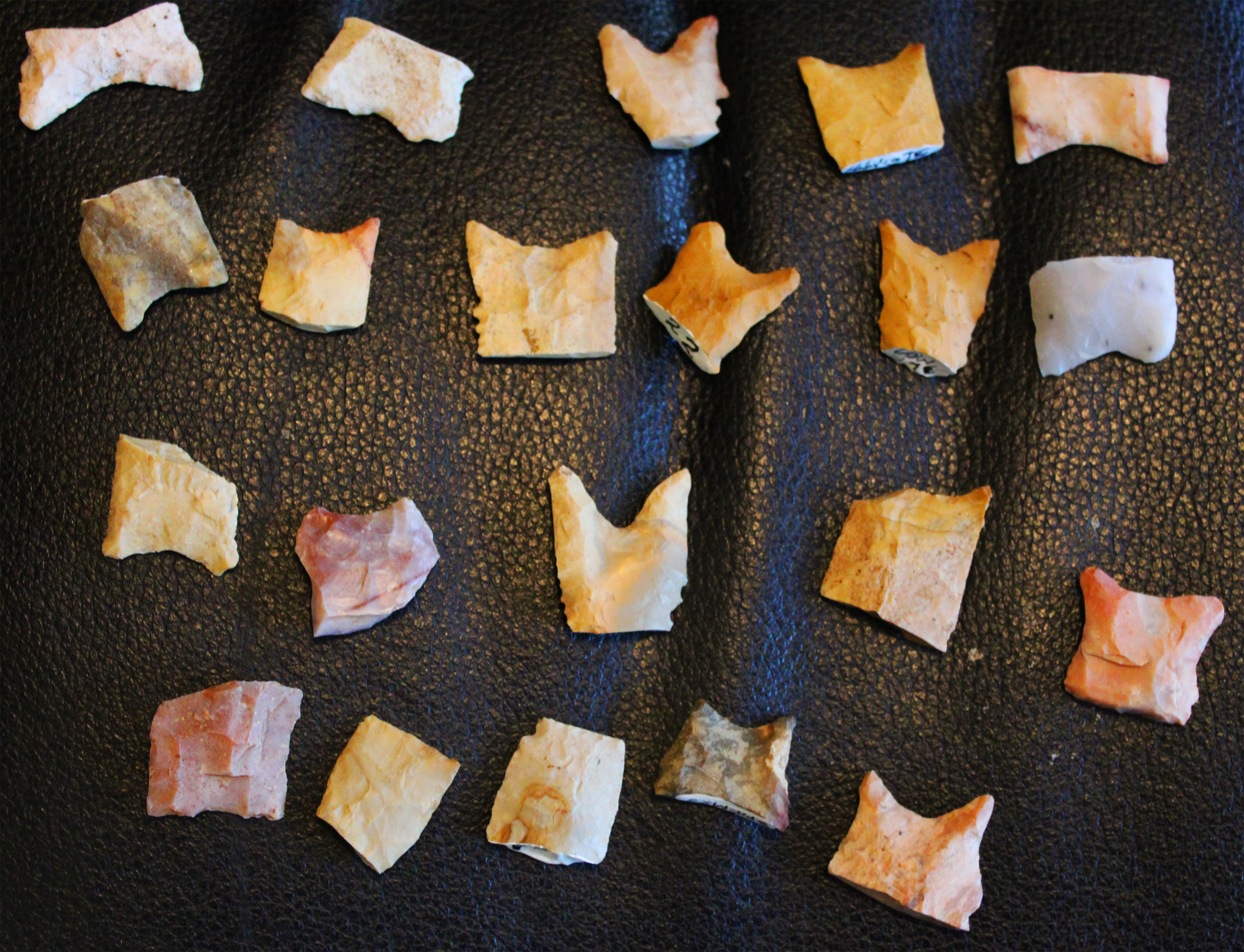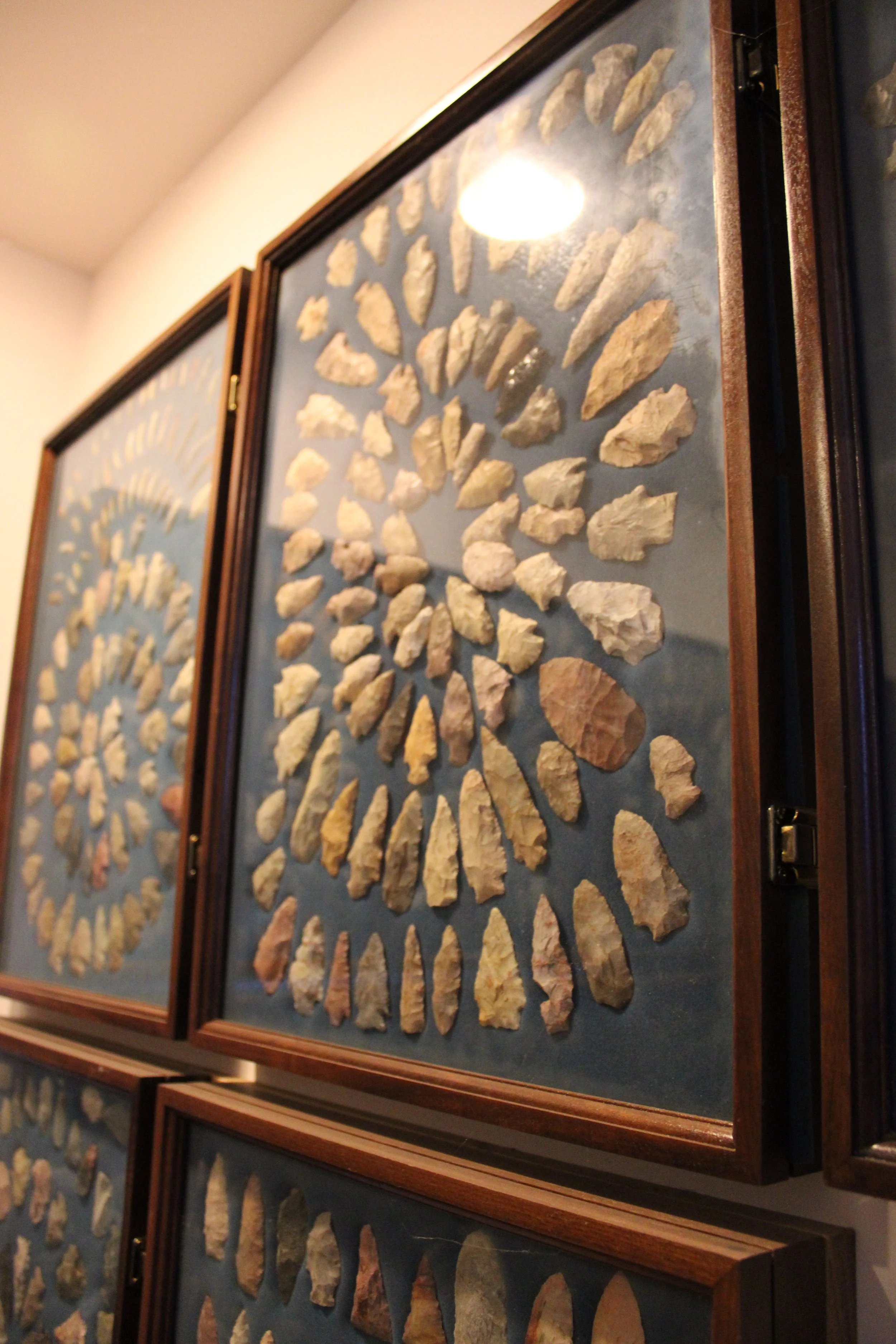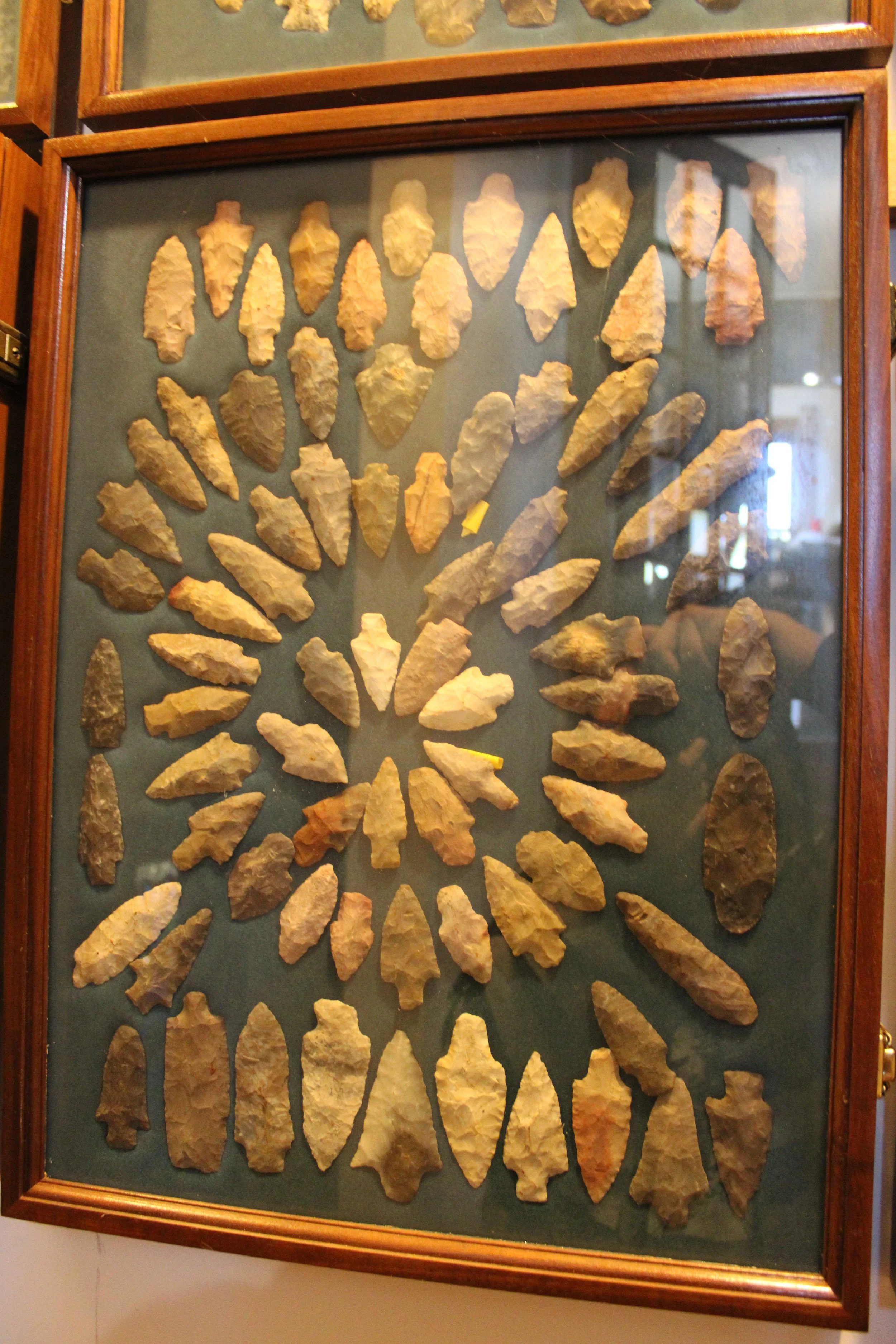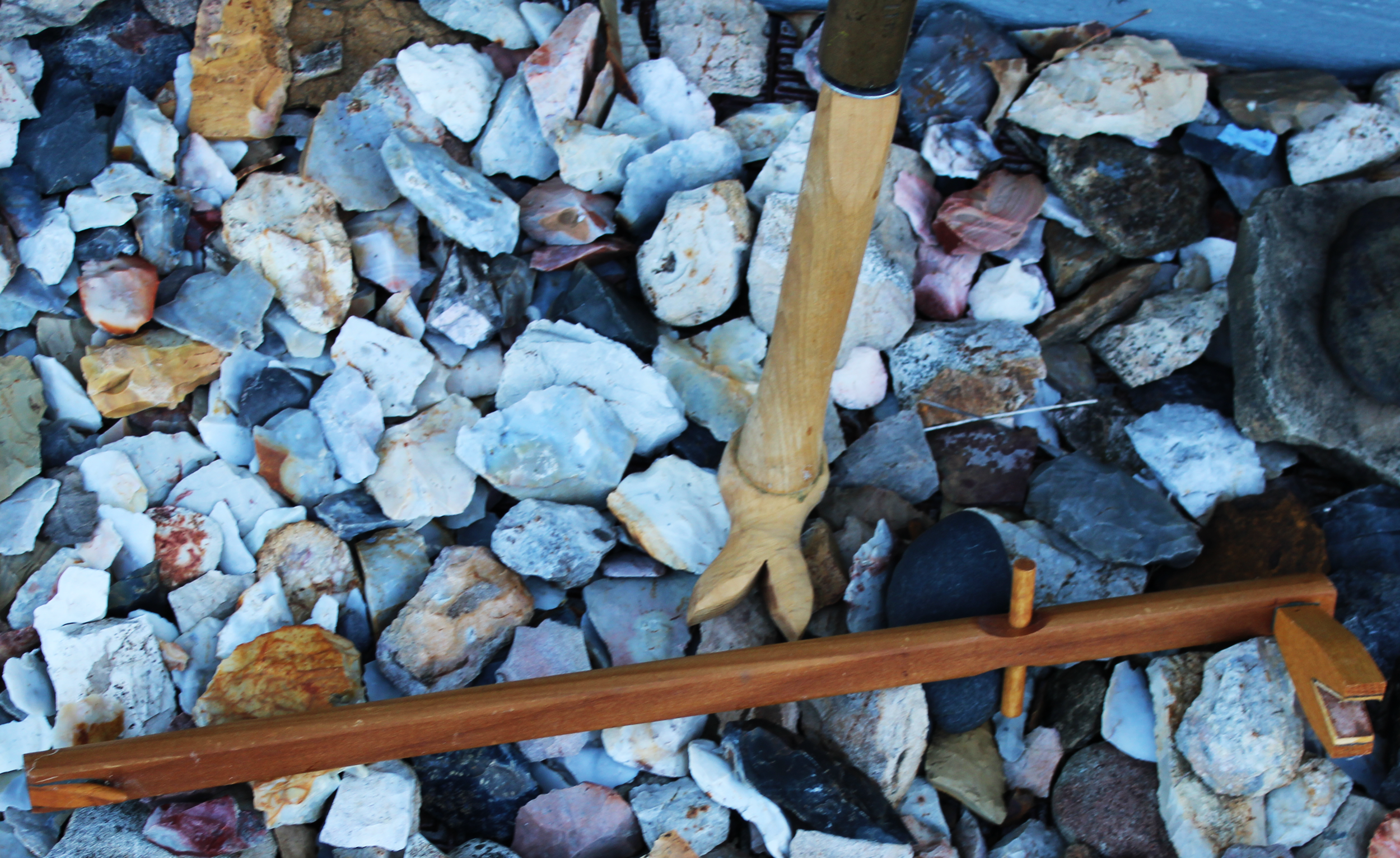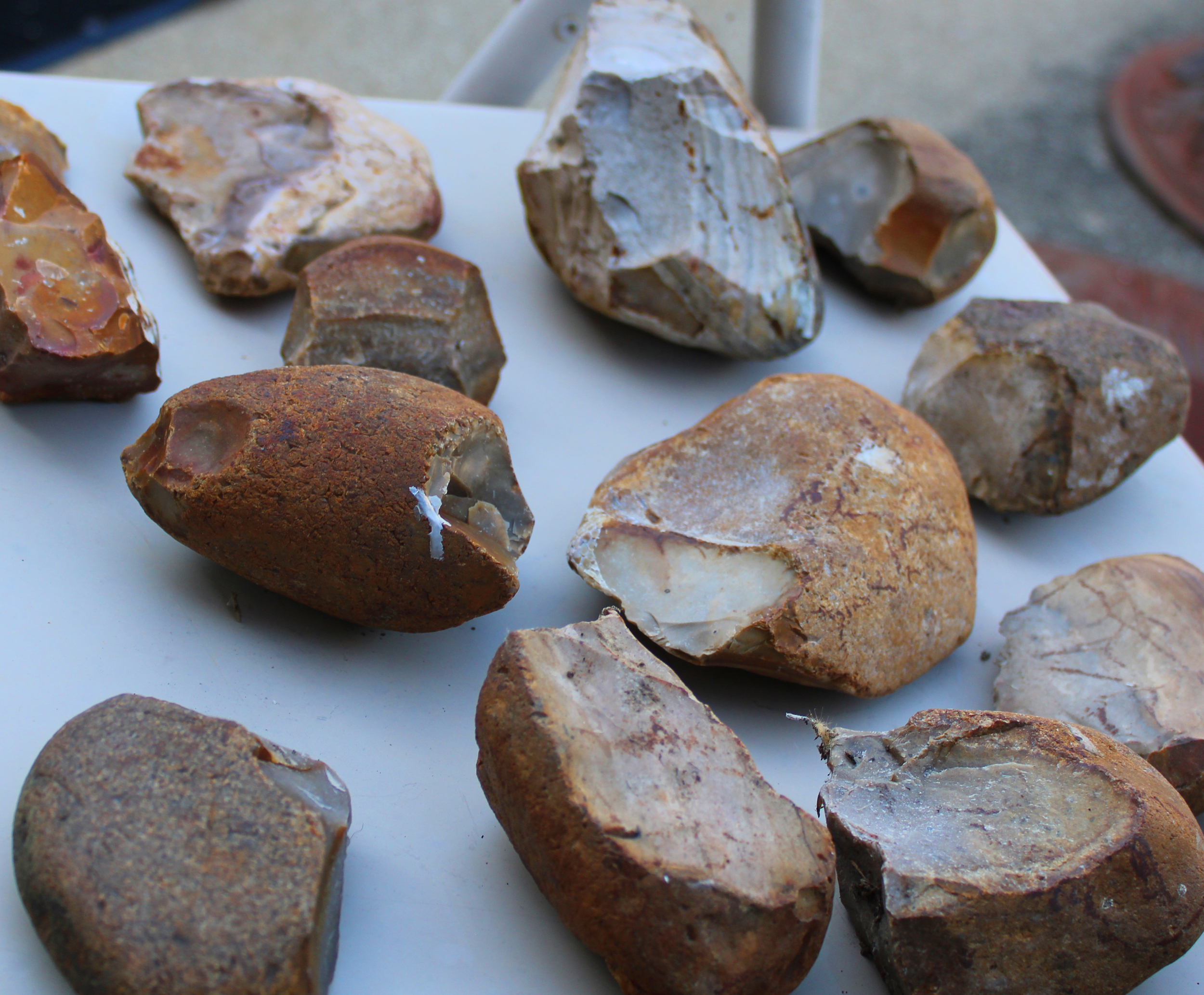50 Years of Research on Banner Stones and Atlatls
By Don Scott
How did early man survive large predatory animals hundreds of thousands of years ago before the invention of the bow and arrow? Modern man has tried to discover the answers that time erased. Long gone due to deterioration are the wooden weapons, tools and leather artifacts made by early man. Left behind are many stones and a few bones. In the last few decades, many of the questions are answered.
Raised on a 60-acre produce farm in Indiana was hard work and the days were long. While hoeing in a large field of melons one morning, I found a broken dovetail “arrowhead” then in the afternoon another. “Arrowheads” is what everyone said they were! The stones were finely knapped and beautiful. My eight-year-old imagination went wild, knowing human hands had not touched them for several hundred years. (Actually, they were 8,000 years old!) After all, the Indians on TV shot arrows with bows at the cowboys who shot back with guns.
Studying early Paleo Anthropology reveals large cats, larger than today's, killed humans finding puncture marks in many of their craniums. During the Pleistocene ice age, from 2.6 million years ending about 11,800 years ago, animals had long woolly hair and were several times larger than animals today. Man somehow overcame these very dangerous woolly mammal beasts in North America. Some people think that man killed all of these massive beasts making them extinct, while others know most woolly mammals adapted to the climate change by becoming smaller with shorter hair. Our North American Paleo aborigines used the woolly mammal's meat for food, their hides for clothing and shelter. Somehow, man's superior intelligence overcame the saber tooth tigers and the woolly mammal beasts, but how?
People in Africa invented the bow and arrow more than 60,000 years ago but bows only came to the Americas 2,000 to 3,000 years ago. Experts dealing in North American stone points do not see arrowheads before or during the archaic periods and firmly feel the bow and arrow did not arrive in North America before 2,000 years ago. This was long after the woolly mammals were extinct. In addition, the primitive bow and arrow did not have the killing power of today's modern bows and arrows, which presented a problem attempting to kill these large beasts. Modern improved bows made of laminates and other materials give the arrows more velocity with much more killing power.
Arrowheads Are Not Arrowheads?
Most flint points called "arrowheads" are not arrowheads. These points are commonly Atlatl points. The Atlatl is a spear-throwing device; many made differently with combinations of wood, bone, horn, stone and hew. Usually made about 12 to 30 inches long and works by extending the length of the arm, catapulting a spear called a "dart" with a stone point. Darts range in size from a small arrow to a large eight-foot spear. The dart is concave on the back end and fits on the Atlatl on a spur usually made of horn.
A person can throw a dart with an Atlatl about 300 feet, but without the Atlatl only about 60 feet. When you first throw a dart with an Atlatl, it is shocking to feel the incredible power and accuracy of this weapon. The Atlatl can have more killing power than a gun within 50 feet, particularly with larger stone points hefted onto the dart.
The Spanish Conquistadors feared death from the Aztec's steel armor piercing Atlatl darts. All over the world, Atlalts were in use except by the northern most Eskimos. In remote parts of the world the Atlatl is still used today, Papua, New Guinea, and the Australian Aborigines. A hunter could defend his family with an Atlatl and harvest enough game to feed them and enough hides to clothe them. Many Native Americans were hunting larger game with Atlatls beside their bows when the white settlers arrived. Today, hunters still use the Atlatl for deer hunting in Alabama, Missouri and Nebraska.
Just a few decades ago, archeologists were not sure if the Atlatl went back to the early archaic period of 8,000 years ago. Archeologists now know the Atlatl arrived in North America with our first Paleo aborigines. An advanced Atlalt found in a dry cave in France dated more than 17,000 years old. Additional parts of Atlatls found in other dry caves in France dated 21,000 years old. During the last ice age sea levels were 384 feet lower than today, there was a land passage to North America via what are now the Aleutian Islands. These North American Paleo aborigines were of Asian descent. Examining thousands of their fluted paleo points, we find the majority had high velocity impact fractures breaking off their pointed tips. Archeologist proved scientifically acute fracture angles required high velocities from Atlatls.
Many were re-sharpened and used multiple times. Commonly the only part remaining of these awesome Atlalt Paleo points are the nubbin bases.
After the last ice age ended, the temperatures averaged about 10 degrees F. warmer. During this archaic period (8,000 to 4,000 years ago), these Native Americans became a descend [sic] mix of the Asian, European and the South Pacific cultures.
At the age of twelve, an old man convinced me not to throw away my muddy surface find in a plowed field, which is a beautiful hole-drilled banner stone. It looked like a bone with a hole drilled through it.
In the 1950's archeologist did not understand this stone or the use of banner stones and called them problematic forms. We now know banner stones are the counter balance weights from Atlatls. (Pronounced At latl) There was an intact ancient Atlalt discovered in the Ozark Mountains and one of a different type in the Montgomery Shelters in Southwest Missouri. In Nevada, there was one of North America's earliest Atlatl's found with the counter balance weight still attached.
There should be no question to the present day's confusion concerning whether banner stones were counter balance weights attached to the Atlalt. There is absolute proof they were! Counter balance weights give the Atlatl more accuracy and stability. In the 1930s, during the depression, William Web from the University of Kentucky worked with a team from the WPA (Works Projects Administration). They unearthed many graves in Kentucky's Green River Valley. They found two banner stones lying between the antlers handles and antler hooks with the wood from the Atlatl deteriorated and gone. There was an ancient antler Atlalt hook found with its rare antler banner stone together in Illinois.
Today, many modern made Atlatls have a counter balance weight attached. There are other types of ancient stone counter balance weights without the banner stones large center hole including bird stones. Experts call these western U.S. type "tie on banners".
Found throughout the continental United States, northern Mexico, and southern Canada are wonderful examples of ancient hole-drilled banner stones with a hole drilled in the middle. They drilled the holes with waterweeds and sand. These extremely advanced Atlatls with drilled banner stones were in use only from about 8,000 to 3,000 years ago and not in other parts of the world. Long gone are most ancient Atlatl wooden shafts, leather parts, most antler Atlatl hooks and other biological materials. Although, Atlatl dart's stone points are found by the millions all over the world and usually called arrowheads.
There is a unanimous consensus by the many archeology and Atlatl experts that contributed to this article that most points called arrowheads are not arrowheads but Atlatl points.
For decades, some experts were convinced that all the work drilling the hole and polishing the banner stones was for the banner stone to slide out the Atlatl shaft so the centrifugal force would give the dart more thrust. After personally making very advanced adjustable experimental Atlatls out of stainless steel with sliding copper weights came my answer. No way! After many tries to throw the dart, the sliding weight made it awkward when mounted on the main Atlalt shaft making it so inaccurate that it was dangerous and the dart usually fell to the ground by my feet. Additionally, the holes are too small for wood or bone to have enough strength to work.
Why do all the work to drill that hole in a stone when it is so easy to tie on a stone weight in a fixed or adjustable position without a hole. Most hole drilled and tie on banner stones appear to be adjustable to different fixed positions on the Atlalt shaft. Adjusting the weight enabled them to hunt different sizes of game to compensate for the weight of the dart and range to their targets.
Some experts claim the very large banner stones must be for ceremonial use because they are just too heavy to use as counter balance weights on the Atlatls. To find the answer to this puzzle I taped a heavy six-pound stone (heavier than a huge banner stone) onto my Atlatl and used a long large heavy dart. Concerned about hurting myself with this heavy monstrosity looking contraption, I warmed up a little, but it was easy to throw. The Atlatl dart hit the middle of the target each time with more impact. Yes, these huge banner stones are counter balance weights for hunting large game. Atlalt experts use heavier counterbalance weights with the longer heavier darts.
The massive amount of Atlatl artifacts found by the millions, specifically points and banner stones prove America's early populations were in the tens of millions with the exception of late Archaic period about 4,000 years ago. During the last ice age, there were millions of Paleo aborigines living along the Colorado River using uniface axes made from river pebbles to open the large muscle shells. Proof of this habitat is the millions of axes with few banner stones mixed in that are found in a 12-inch layer about 10 inches underground around the Colorado River's plateaus.
For the last 50 years, I studied the Neanderthal culture (40,000 - 200,000 years ago), their sites and stone artifacts. Based in Saudi Arabia in the 1970's, I traveled the world as a pilot giving me the opportunity to explore many Neanderthal and archeological sites. Managing the large Scott Antique Markets for the last 30 years gives my archeology and Neanderthal study the added opportunity of associating with exhibiting antique and archeological experts arriving from all over the planet every month. I am able to examine and collect from the numerous Neanderthal and North American Indian stone artifacts they bring to the markets. The Neanderthal flint knappers were brilliant artisans making many types of tools, which are as fine as other cultures including the North American Paleo and Hopewell Native Americans.
Just like most North American points from Paleo, Archaic, including later periods, these Neanderthal stone points have knapped stems to heft onto a shaft. Like most points called arrowheads, they are too large to place on an arrow to launch with an ancient bow. A few of the Neanderthal artifacts have sharp points, yet many of the points are broken off. Why were so many of the Neanderthal points broken? After studying thousands of Neanderthal points with magnification, it became obvious that high velocity impacts with bones or the ground caused the points to fracture at higher angles than the flint's grain. Could these hefted points really be Atlatl points?
Attempting to break Neanderthal points hefted onto spears with steel tools surprised me, they did not break. Placing actual intact Neanderthal points on darts and throwing them with an Atlatl, the points would fracture off upon hitting a rock. The fracture angles were the same as the other points proving high fracture velocities. The experts claim "Most flint in the Americas' is low in quality, easy to break and is actually chert." However, they say, "As long as we understand this, it is ok to call our chert flint." The flint used by the Neanderthals is high quality, very strong and it takes a very high velocity impact to break off the sharp points. My conclusion, the Neanderthals obviously used Atlatls! Experts write their population estimates of only about 50,000 Neanderthals. There have been hundreds of thousands of Neanderthal points found. Most Neanderthal artifacts are lost within the earth's sediments, with certainly only a small percentage collected. Therefore, how many Neanderthals were there? Maybe millions!
Certainly, spears were developed first, although still having family members killed and eaten by beasts likely brought along the thought process to develop the Atlatl. How exciting it must have been to thwart off and kill the predators by effectively throwing the Atlatl darts (spears) into them from dozens of yards away. Archeologist recently claimed the Atlalt goes back beyond 400,000 years, (Hominid, Homo heidelbergensis) after layer dating seven Atlalt points. Will we ever know what Hominid culture developed the Atlatl?
The world record Atlatl throw is 848.56 feet. A shorter Atlatl-throwing device gave the hunter more control, while a longer atlalt [sic] throws the dart further. The heavier stone point has much more impact force but a shorter flight distance. Longer shafted darts are more accurate. Atlalt dart points are made in many shapes and sizes. Ancient flint knappers from different cultures made atlalt [sic] stone points that looked different, but each specific culture's points all looked the same from very small to large. Collectors and experts usually know the culture's name and age of a point with a glance.
Late Native American cultures used bows with tiny arrows. The Mississippian culture's little triangular points and the Woodland culture's tiny bird points are perfect examples of actual arrowheads.
With the arrival of the bow and arrow, Native Americans could easily harvest smaller game and the prolific carrier pigeons, which darkened the skies over North America by the billions.
Man advanced from Atlatls and bows with arrows to guns. With the arrival of white man and guns, we no longer have masses of carrier pigeons darkening our sky. They were shot, pickled, placed in large barrels and sold into Europe as a delicacy by the shipload. They soon became extinct. Today we still have the common pigeon and the homing pigeon, which are close relatives of the carrier pigeon.
It was exciting every spring when the neighboring farm fields and ours were plowed to spend every spare minute surface hunting artifacts after rains. There were more artifacts, various flint tools, axes and “arrowheads” in areas of concentrated rocks. These areas were obvious campsites. My interest led to the gifted receipt of my grandmother's “arrowhead” collection and a lifetime study and love of archeology and other old antique things made and used by people before my time.
Now more than 60 years after finding the broken Atlalt dovetail points, my lifetime love of archeology and antiques has grown. These childhood finds have inspired me to produce some of the world's largest and exciting antique shows. You are cordially invited to shop and see the artifacts of prior man at the Scott Antique Markets in Atlanta, Georgia the second weekend of every month, the winter shows at the Ohio State Fairgrounds...
Thanks to the contributors of this article:
Members of the Archaeological Society of Ohio, Experts on Stone Points and Artifacts
Gary Noel, Archeology Expert on Stone Points and Artifacts
Marj Noel and Betty Scott, Proof Readers
Atlalt Bob, GPS Engineering, Atlalt Expert
Jay Strietek, Modern Atlalt Expert and Atlalt Manufacturer
Doug Leeth, Modern Atlalt Expert and Atlalt Manufacturer
Jack Rowe, Modern Atlalt Expert and Atlalt Manufacturer
Terry Borah, President Bremen Museum and Help With Atlalt Experiments
Smithsonian Museum, Large Collection of Atlalt's and Artifacts From All Over the World
Scott Antique Market Exhibitors, Archeology and Antique Experts
Kenny Scott, Archeology Collector and Proof Reader
Many Helpful Experts and Proof Readers, Too Many To Mention
In Memory of Paul David Scott, Expert on Banner Stones and Native American Artifacts
Native American Atlatl points
Atlatl
Neanderthal Points
Wooly Mammoth
Butterfly Bannerstones, Tube Stones, and Broken Bannerstones
Broken Neanderthal Points (Impact Fractures)
Neanderthal Points
2
7
11
1
4
9
5
8
12
6
10
3
